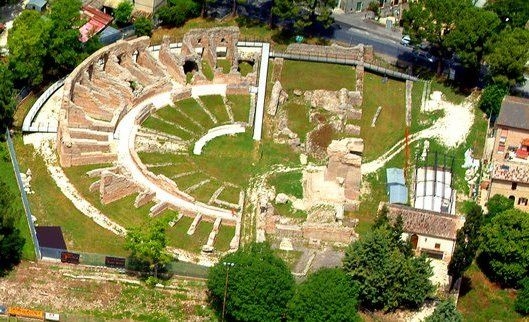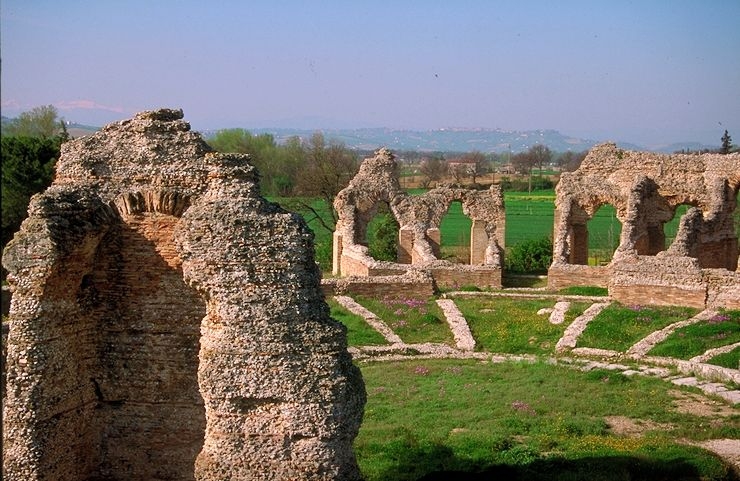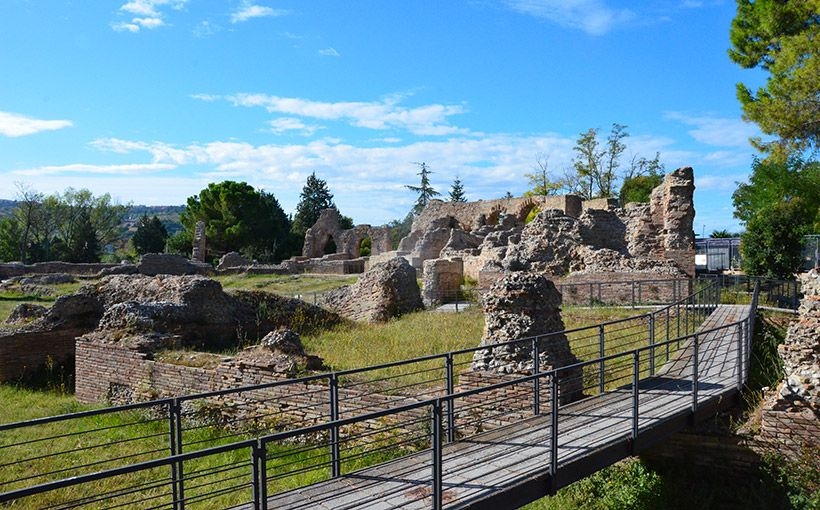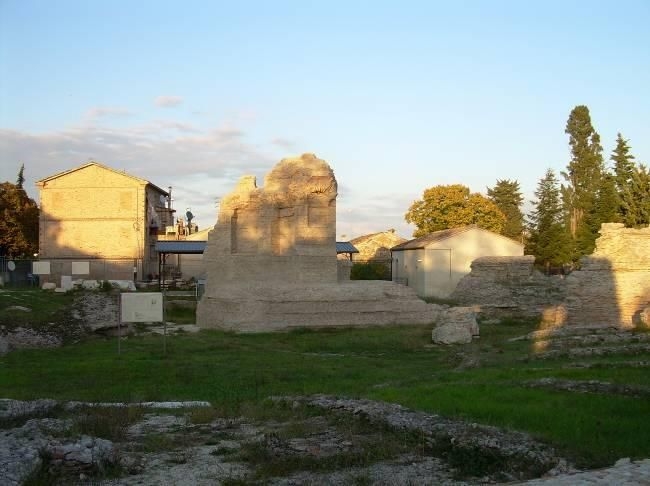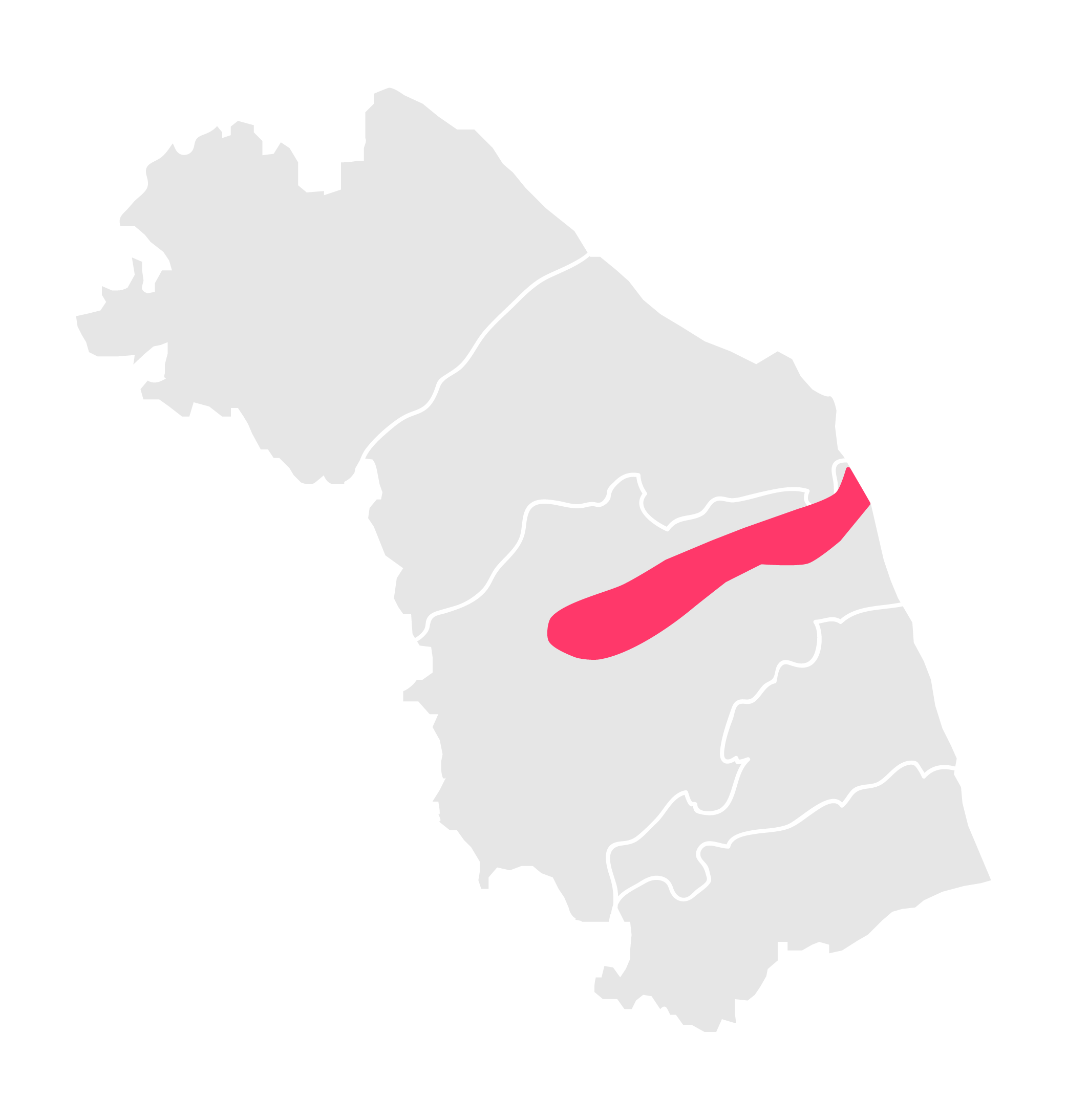
The city of Ricina developed on an alluvial plain, about 15 km. from the sea, on the left bank of the Potenza river. The city, located within a territory frequented by humans since prehistoric times, became a township as early as the second half of the 1st century BC. The importance of Ricina was linked to the strategic position of its territory, between the Salaria Gallica, which united Ascoli Piceno to Jesi, passing through the main Roman cities, crossed by Flaminia Camellaria, and connected to Pausulae (S. Claudio di Corridonia) and Potentia (Porto Recanati). Archaeological excavations have made it possible to identify the ruins of the city in the hamlet of Villa Potenza, not far from the city of Macerata, where the Archaeological Area of Helvia Ricina is currently found. The main monument of the area is certainly the theater, built in the area of forum in the Augustan period, a moment of strong ferment in terms of public building, and partially modified during the 2nd century AD within a program of urban renewal; right at the beginning of the 2nd century AD, in fact, the city was elevated from township to colony and renamed Helvia Ricina Pertinax by will of Emperor Settimio Severo in tribute to his predecessor Publio Elvio Pertinace. Of the theater, featuring a 72-meter-long cavea and three tiers of seating, there also remain portions of the scene and service facilities. Beyond the Theater there is still visible from today's State Road 361 a stretch of paved road probably referable to the maximum decumanus, originally flanked by a portico with warehouses. Still in the archaeological area, there are preserved crafted stone blocks referable to funerary monuments originally located in the area of the necropolis. Despite the importance gained in the Imperial Era, following the vicissitudes of the Greek Gothic War, the Helvia Ricina population moved to higher ground and began constructing the core of what would become the city of Macerata.
We have found no place to eat in the vicinity
We have found no place to sleep in the vicinity
Vino e olio, eccellenze dell’agricoltura e della gastronomia marchigiana, sono da sempre al centro dell’economia e dell’identità culturale locale, come testimoniano i numerosi impianti per la produzione olearia e vinicola presenti sin dall’età picena nella regione. Il viaggio alla scoperta del territorio dedicato all’antica produzione dell’olio e del vino ci conduce lungo la Salaria Gallica, strada che collegava Fossombrone ad Ascoli Piceno passando per le principali colonie romane, immerse nelle verdi colline marchigiane.

|
Address | Via Teatro Romano Macerata |

|
Phone Number | (+39) 0733256361 |

|
Opening Time | Su prenotazione chiamando allo 0733256361. Da Luiglio alla prima settimana di Settembre aperto nei festivi e prevestivi dalle ore 10:00 alle ore 12:00 e dalle ore 17:00 alle pre 19:00. |

|
Visit Time | 45 min |

|
Entrance Fee | Gratuito |

|
Reservation Required | si |

|
Viabilities | Salaria Gallica - Camellaria |

|
Bookshop | no |

|
Free Guided Tour | no |

|
Guided Tour | si |

|
Parking | si |

|
Disabled Accessibility | no |

|
Audioguide | no |

|
Didactic Rooms | si |

|
Conference room | no |

|
English language | si, possibilità di visita guidata in lingua su prenotazione a pagamento |

|
Public Transport | no |

|
Family Services | no |
